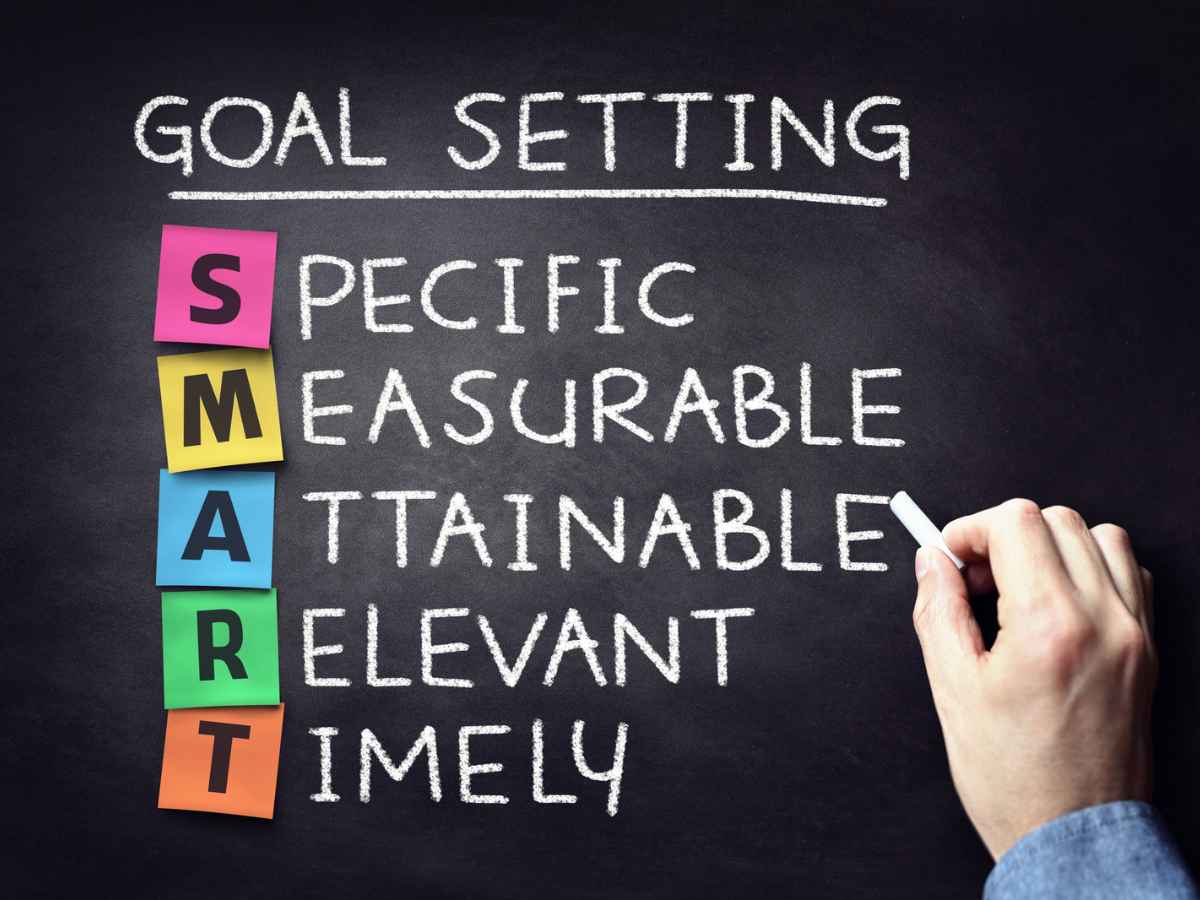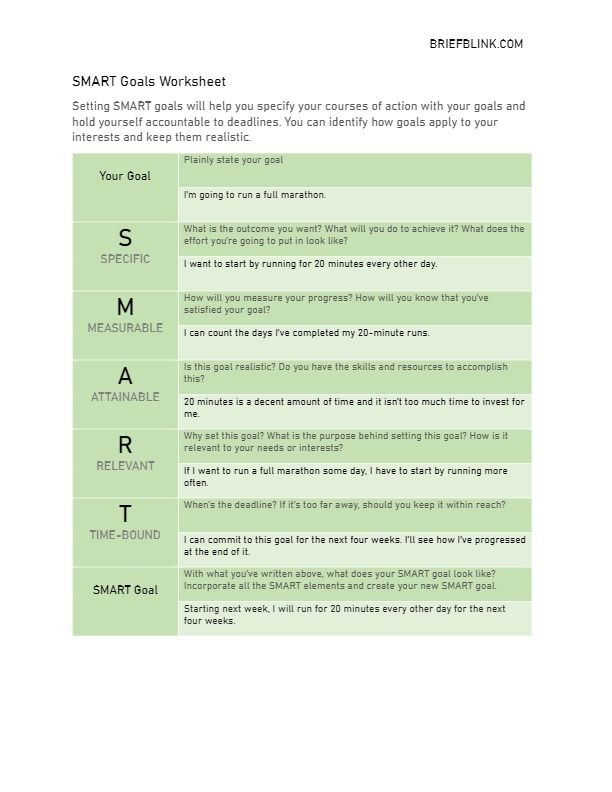How to Set SMART Time Management Goals with Practical Tips and Examples
Struggling with productivity? Let's see how SMART goals aid superior time management. Looking to save time and be productive? With practical tips and examples, this post is a must-read. Discover how to introduce SMART goals into your time management. Don't let time dictate you, take charge now!

Let's talk about time management and the importance of setting SMART goals to boost your productivity. Time management is a critical skill that can have a significant impact on personal and professional success. It involves prioritizing tasks and activities.
Effective time management is about allocating time accordingly to work efficiently. You can maximise productivity, reduce stress, and create a better work-life balance with proper time management.
SMART goals will save you time. They'll leave you with more time to spend on important tasks. You can track your progress. You'll achieve your goals faster and accomplish more in less time. SMART goals help you better plan your time, prioritize tasks, and avoid distractions. You'll stay motivated to maintain a balance between personal and professional commitments.
Let's talk about setting time management SMART goals.
What is time management?
Time management involves planning and controlling how much time you spend on specific activities. It allows you to work smarter - not harder. Building time management skills and using techniques can help you accomplish more tasks efficiently. This will lead to having more time and increased productivity.
These tools may include time blocking, task prioritization, and using to-do lists and calendars. You can optimize your workflow, streamline processes, and save time. Even when time is tight and pressures are high, you'll pull through with time management.
Why is time management important?
Time management is important for a variety of reasons. Effective time management allows you to complete more in less time. That frees you time, reduces stress, and prevents burnout. It enables you to focus on the tasks that matter. Setting goals and using time management strategies allow you to manage your time and increase productivity. Saving a few minutes a day may seem trivial. The benefits become more apparent when working towards long-term goals.
What are the three Ps of time management?
The 3 Ps of time management are planning, prioritizing, and performing.
Planning
Planning is a critical first step in effective time management. This starts with laying out all the tasks you need to accomplish. Then, map out a schedule or a timeline to complete them.
Having a plan is important. Without a solid plan in place, you may find yourself jumping from between tasks and projects. That's inefficient and stressful. Planning helps you forecast your workload and set clear objectives. You can establish a controlled and structured pathway to reach your goals.
Prioritizing
The next step is prioritizing. Not all tasks are created equal. Some tasks will have a greater impact on your goals and objectives than others. Ask yourself which tasks give you the most return for investment. This decides what's important to you.
Determine the order in which you'll tackle your tasks. This is based on their importance and urgency. Prioritize to focus your time and energy on meaningful tasks. This could mean doing the most demanding tasks first when your energy levels are high. It could also mean focusing on tasks that have looming deadlines.
The Eisenhower matrix is a great tool you could use to prioritize your tasks by importance and urgency.
Performing
The final P is performing. This is where the rubber meets the road. It's all about taking action. Execute the tasks that you've planned and prioritized. Stay focused and disciplined as you work through your tasks. Stick to your tasks until they're 100% complete. Remove all distractions. You might want to turn off your mobile phone or close your email.
Real-life often doesn't go according to plan. Be adaptable and flexible. If unexpected tasks or challenges arise, you may need to adjust your plan and rethink your priorities. Maintain a balance between staying focused on your plan and being adaptable to change. That's the key to performing successfully.
What are SMART goals?

Let's talk about SMART goals. How are they related to time management? SMART stands for Specific, Measurable, Achievable, Relevant, and Time-bound. It's a framework for setting clear, attainable goals that can drastically improve your time management skills [1].
A SMART goal is as simple as a short statement. It leads us in the direction of what we want to accomplish. Making your goals SMART saves you time and resources. They provide you with a clear direction and practical steps.
SMART goals are used in many goal setting purposes. They're applied in education, business management, and personal development. They're also great at improving time management skills.
Why should you use SMART goals?
Having any goal is important. SMART goals can help you manage time effectively. The SMART framework breaks a goal into smaller, manageable tasks. This makes it easier to manage your time effectively and accomplish more.
A vague goal like, "I want to get better at time management" doesn't help you. Set a SMART goal for time management like, "I will spend 10 minutes at the end of each day planning my schedule for the next day to improve my time management skills." The statement tells you what to do to accomplish your goal.
When should I set SMART goals?
There's no 'right' time to set SMART goals. However, they're particularly useful when you're looking to improve certain skills or work on a big project. SMART goals provide you a roadmap to strengthens your time management and productivity. It doesn't matter if you're a student, a businessman, or a homemaker. SMART goals translate to better time management and productivity for everyone.
How to write SMART goals?
Writing SMART goals takes careful thought and consideration. Each letter in the SMART acronym represents a different aspect of your goal. Let's break it down:
Step 1: Make goals specific
The "S" in SMART stands for specific. Set a goal that's clear-cut and precise. A specific goal has a much greater chance of being accomplished than a general goal. For instance, instead of saying, "I want to be more productive," a specific goal would be, "I want to complete three tasks before lunch each day."
Step 2: Make goals measurable
"M" stands for measurable. Include concrete criteria for tracking progress. This helps you determine when the goal has been met. By making your goal measurable, you can monitor your progress. This keeps you motivated. Saying that you'll complete three tasks by lunch tells you the amount of work you'll want to do. You'll know when you've satisfied your goal.
Step 3: Make goals achievable
The "A" stands for achievable. Your goals should stretch your abilities. A goal is achievable when they stay realistic. They may require you to develop new skills and change attitudes. If it seems out of reach, break it down into smaller, more attainable goals. Completing three tasks before lunch might seem daunting. Start with one task and gradually increase if you need to.
Step 4: Make goals relevant
"R" stands for relevant. Your goal should apply to your life's direction. Keeping goals aligned with your needs. You'll develop the focus you need to get ahead and do what you want. Completing tasks before lunch each day would apply to time management.
Step 5: Make goals time-bound
Finally, "T" stands for time-bound. Every goal needs a deadline. This lets you work toward something. It also stops everyday tasks from taking priority over your longer-term goals. You could set a goal of maintaining a routine for 30 days. You may set new goals after the deadline.
Follow these steps, and you can create SMART goals that guide you in managing your time and increasing your productivity. Remember, the most effective goals are well-defined, attainable, and set within a timeframe.
Examples of SMART time-management goals
Let's illustrate using SMART goals to improve time management. Here are 3 examples.

Example 1: Arriving early at work
Specific: Make it more specific than, "I want to be on time for work." A better goal would be, "I want to arrive at work 15 minutes early."
Measurable: You can easily track the time of your arrival at work.
Achievable: You'll only make a slight adjustment to your morning routine.
Relevant: Arriving early at work can help you start your day in a relaxed way. You'll have some extra time to organise your tasks for the day.
Time-bound: Set a timeframe for completing this goal. For example, "I will start arriving 15 minutes early at work starting from next Monday for one month."
Example 2: Dedicating time to important tasks
Specific: Don't just say, "I want to focus more on important tasks." Specify the tasks and the time to be dedicated. For instance, "I will spend the first two hours of my workday on the most important project tasks."
Measurable: You can track the time spent on important tasks.
Achievable: You're re-purposing your time. Organise your tasks well. It may help to avoid distractions during this period.
Relevant: Spending time to focus on important tasks is beneficial. You can significantly improve your productivity and the quality of your work.
Time-bound: An example of a time-bound goal could be, "Starting from next week, I will spend the first two hours of my workday on important project tasks for a period of three months."
Example 3: Taking more breaks
Specific: Instead of saying, "I want to take more breaks," make your goal specific. For example, "I will take a 5-minute break every hour to stretch and refresh."
Measurable: You can track the frequency and duration of your breaks.
Achievable: It only requires a minor adjustment to your work routine. Setting a timer or alarm can help.
Relevant: Regular breaks can help prevent fatigue, maintain focus, and boost productivity [2].
Time-bound: A time-bound goal could be, "Starting from tomorrow, I will take a 5-minute break every hour during my workday for four weeks."
Setting SMART goals is a dynamic process. It may require some trial and error. Adjust and fine-tune your goals as needed. Ensure they stay relevant and attainable.
Helpful time management tips
We've covered SMART goals and some examples. Let's look at some practical tips that can help you improve your time management and boost productivity.
Tip 1: Take regular breaks
Taking regular breaks is essential for maintaining high productivity and keeping stress levels in check [2]. Despite what you may think, breaks aren't a waste of time. They refresh your mind, reduce fatigue, and improve creativity.
So, try implementing short breaks into your routine. Once every hour shouldn't hurt. This strategy aligns with the Pomodoro technique. It's a method of working in time intervals separated by brief breaks.
Tip 2: Avoid multitasking
Multitasking may seem like an efficient approach. However, it often results in decreased productivity and effectiveness. When you multitask, you divide your attention. You're prone to making mistakes. You'll then take longer to finish tasks.
Instead, focus on one task at a time before moving on to the next. This will improve the quality of your work and can help you complete tasks faster.
Tip 3: Plan ahead of the next day
Planning your tasks in advance saves you plenty of time. It's a great way to manage time effectively. Take a few minutes at the end of each day to plan for the next one. Identify the tasks you'll want done by the end of the day. Prioritize them based on importance and urgency.
This way, you'll know exactly what needs to be done when you start your day. This allows you to start strongly.
Tip 4: Make a workable schedule
Remember, the goal is to make a workable schedule, not a perfect one. SMART time management goals require breaking goals into manageable tasks. It's important to be realistic about how long each task will take you.
Include buffers for unexpected tasks or interruptions. Otherwise, your schedule would be unsustainable. Also, ensure to schedule in breaks and leisure time to maintain a healthy work-life balance.
Tip 5: Tidy your physical space
Believe it or not, your physical space can affect your productivity. A tidy and organised workspace can reduce distractions and increase your focus. You'll be more productive. So, take a few minutes each day to tidy up your workspace. You might then find it's easier to concentrate.
Tip 6: Review your goals
Lastly, it's crucial to regularly review your goals. This will help you stay focused on what's important. Check that you're not wasting your time. You can assure yourself that you're making progress towards your achievements.
You might find that a goal no longer aligns with your priorities or circumstances. Don't be afraid to make adjustments or let it go. Remember, your goals should serve you, not the other way around.
Improve Your Time Management with SMART goals
To get you started, I've created a template (see below) to help get you started. It's ready to download and yours to mess around with.

Frequently Asked Questions
How is time management a SMART goal?
Time management can indeed be a SMART goal. For instance, you might set a goal to reduce the time you spend on non-productive activities by 30% in the next three months.
It's specific (reduce time on non-productive activities) and measurable (by 30%). It's achievable (with conscious effort and planning) and relevant (it directly impacts your productivity). It's time-bound (set to a specific time within the next three months).
Are SMART goals effective?
Yes, SMART goals are effective. They're more effective than conventional goals. They provide clear, concise goals that are easily tracked and measured. They give you a roadmap to follow, ensuring that your efforts are focused and purposeful.
How challenging should my time management goals be?
Your goals should challenge you. They should also be realistic and attainable. If they're too easy, it won't drive much improvement. If they're too hard, it may lead to frustration. You might even give up on your goals.
Striking the right balance is key. Ask someone close for a second opinion. Likewise, tell someone if you think they're going to hard on themselves.
Is it the right time to start working on time management goals?
There's no 'wrong' time to start working on your time management goals. However, if you find yourself constantly feeling rushed or overwhelmed, it might be the right time to start. Also, your goals should align with your other objectives to ensure that you're not spreading yourself too thin.
How do I review your time management goals?
Reviewing your time management goals involves regularly checking your progress towards your goals. You may have to make necessary adjustments. You can do this by keeping a journal. Note how you spend your time each day. This can help you identify any obstacles in your progress. Obstacles refer to any patterns or habits that might hinder you.
What can I do today towards my time management goal?
There are many things you can start doing today towards for better time management. Start soon to improve productivity in the long-run. You could start by identifying where your time goes currently. Then, identify areas of improvement. Where could you be more efficient?
Consider using tools like time tracking software or apps. They could help you better understand how you spend your time. Start writing down your goals using the SMART framework. You'll soon find it easy to save manage your time.
Let's learn together
Thank you for reading. Sign up for our weekly newsletter to receive to the latest blog posts, updates, and more delivered straight to your inbox. Don't miss out on valuable insights, useful tips, and fascinating discussions. Join the growing Brief Blink community today and elevate your understanding to new heights.

